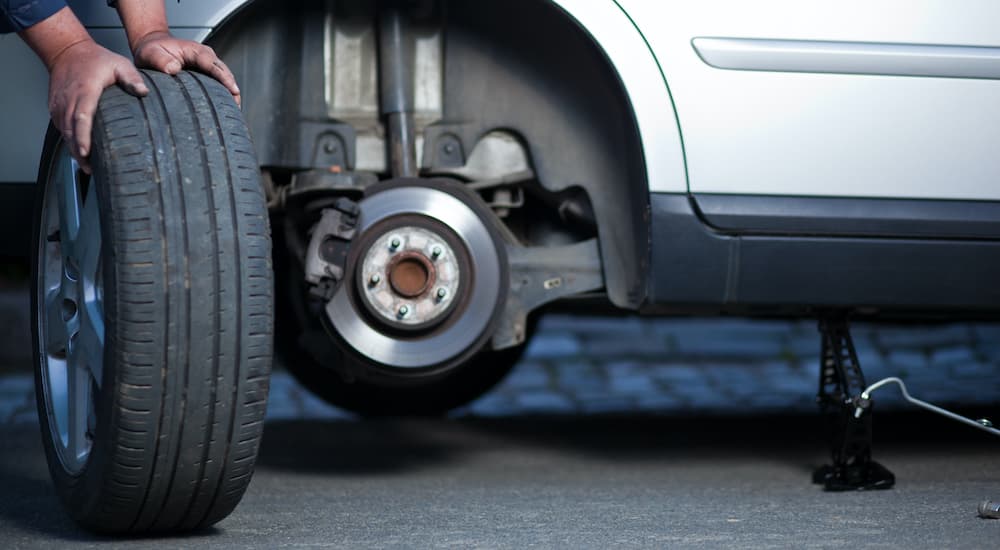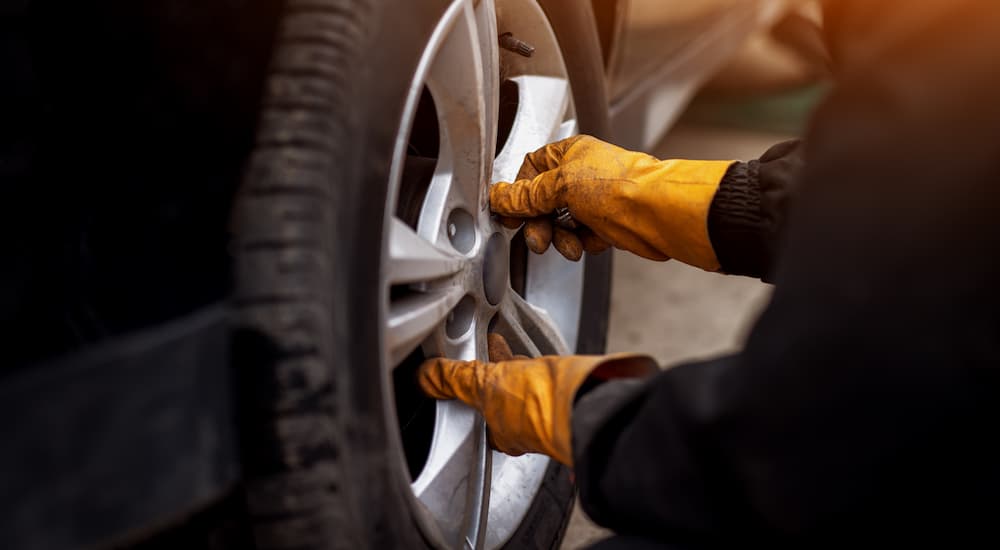When it comes to taking care of your car, things like oil changes, filter replacements, and battery checks are all important – but don’t forget about your tires! Tire service isn’t complex; it just takes a little time and a willingness to get your hands dirty. If you have a spare Saturday afternoon and a few specific tools, you can be your own tire technician and save yourself a few bucks.
More importantly, nothing is quite as satisfying as lovingly maintaining your rig. With all the home shows chronicling DIY home renovations performed by everyday people with no prior construction experience, it’s surprising that DIY car maintenance isn’t catching on with mainstream drivers. You’ll save time, money, and lots of potential headaches when you are your own tire technician.
What You Need: The Basics
Let’s assume you want to perform your own tire inspections, fix small leaks or punctures (like nail holes), and change and rotate your tires yourself. Assuming those are the primary tasks, you need some tools. First and foremost, get your hands on a high-quality tire pressure gauge. We’ve all seen the old-school mechanical gauges in dad’s map pocket, but we recommend upgrading to a digital version. They’re faster, easier to use, and more accurate.
Changing and rotating your own tires is a great cost-saving choice and requires fewer expensive tools than you might think. Sure, a full two-post lift would make things a lot easier, but you can get the job done just fine with a floor jack and a couple of jack stands. If you upgrade to an impact wrench, the job will go a lot faster, but even the basic lug wrench that came with your car will usually work well enough (although a good breaker bar is always worth investing in for hard-to-loosen nuts).
Most DIY tire maintenance involves a trip to the local gas station to inflate your tires. A quick visit to Amazon, though, could save you a trip and keep you from ever needing to drive on underinflated tires. Portable air compressors are relatively inexpensive and are designed to run on your vehicle’s battery or plug right in to its 12V outlet, which comes in handy for roadside inflating. Portable air compressors are lightweight and usually contain their own pressure gauge.
Otherwise, equip your home garage with other basics to keep maintenance simple and minimize messes. You’ll want a stash of automotive towels, microfiber towels, and plastic disposable gloves. You may need a few extension cords and a space to store your gear in between service intervals. We also recommend keeping a log in your glove box or on your phone so that you can track maintenance and mileage intervals.

Inspections and Creating a Maintenance Schedule
At a minimum, you should thoroughly inspect your tires monthly – and not just a cursory glance at tread depth. Wear and tear aren’t the only factors affecting tire life; you should also be concerned about UV exposure and big temperature shifts. If you live and drive in a four-season climate, you may not get as much life out of your tires as someone in a more temperate area. The same holds true for hot desert climates. Sun and temperature swings are tough on tires.
During a monthly inspection, you’re looking for any telltale signs of exposure-related damage, like cracks. Weather isn’t the only potential source of wear, either. If you’ve driven even a short distance on underinflated tires, they’re susceptible to stress cracks and other premature damage. Since the purpose of tire treads is to displace water, depth is critical. As your tires wear, tread depth will naturally shrink. In cold weather climates, you also need more tread to deal with snow and ice.
Ensure that your tire’s tread depth never falls below 2/32 of an inch, but if you live somewhere where it rains a lot or snows, you might consider erring on the side of caution and shooting for a 4/32 minimum. This is regardless of what kind of tires you’re riding on, whether they’re all-season, winter tires, or performance tires. Tread matters, and it’s something you need to keep a close eye on so you and your passengers are protected from hydroplaning and skids.
Here’s a good rule of thumb for general maintenance: visual tire inspections at the change of every season. If you drive in harsh conditions, consider bumping that up to every month. Additionally, rotate your tires at least every 5,000 miles. Tacking a tire rotation onto your oil change is a good way to stay on top of it. If you’re driving a used car and you’re not sure how old the tires are or if they’ve come up against the manufacturer’s wear warranty, you might want to consider shortening the time between rotations to lengthen tire life.
Everyday Tire Care Tips
The single most important tire maintenance tip is inflation. Overinflation is bad: underinflation is worse. Tires lose inflation naturally as you drive on them, which is why a monthly check is important. Temperature also affects inflation levels. Cold weather causes tires to lose pressure, and the reverse is also true. Don’t count on the tire pressure light on your dash to remind you because that system is usually only designed to alert you to dangerously low or uneven tire pressures. Instead, follow the 30-day inspection rule and check them yourself.
The side benefit of driving on properly inflated tires is a boost in fuel economy. Improperly inflated tires almost always degrade your vehicle’s mpg rating. Additionally, the chances of a catastrophic blowout happening at the worst time increase substantially. Poorly inflated tires overheat quickly, and naturally, that heat builds up faster at higher speeds, which is why more blowouts happen on highways than almost anywhere else.
Beyond proper tire pressure, you want to inspect your tires for uneven wear, a sign that they’re unbalanced. It could also be that the roads you’re regularly traveling on are themselves uneven or made of materials that are harder on tires. Either way, uneven wear is almost as serious as inaccurate psi levels. Tire rotations promote more even wear and extend life, and having them off the wheels gives you a good look at even the inner side that you can’t see when they’re mounted.
Lastly, a visual inspection for foreign objects is critically important. This takes time because you have to make sure to inspect the entire tire surface. Taking the time to put eyes on every inch of tire surface helps you stay on top of wayward nails or rocks embedded in the treads. Anything that is on or in the tire can potentially disrupt optimal performance and ultimately affect safety and ride handling.

Take Care of Your Tires Yourself!
In general, tire maintenance isn’t a big deal, and you don’t have to rely on that tire store on the corner. Instead, equip your garage with a few inexpensive tools and carve out one afternoon a month to perform a thorough visual inspection. Keep tires properly inflated, check them religiously for wear and damage, and perform a tire rotation every 5,000 miles or so. That’s it. Other than some quick research to determine the best method for rotation and becoming familiar with your tires’ pressure requirements, you won’t have a steep learning curve.

